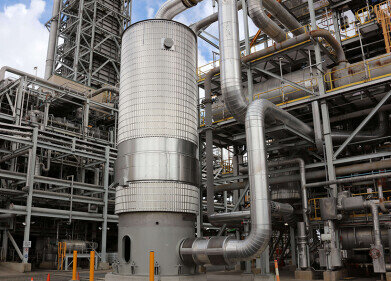Air Clean Up
What Are the Consequences of Climate Change?
Jun 21 2021
In recent years, the issue of climate change has taken front and centre stage in the mainstream media. All of a sudden, political parties are incorporating more environmentally-friendly proposals into their manifestos, activists are bemoaning the insufficiency of their suggestions and scientists are encouraging everyone to follow their lead and slow the progress of this concerning phenomenon.
But what exactly are scientists, campaigners and policymakers so anxious about? The most recognisable symptom of climate change for many people is a rising in ambient temperatures, which for many in colder parts of the globe (including the UK) might not necessarily be viewed as such a bad thing. Why is it a serious cause for concern? Here’s a look at some of the more damaging consequences of climate change and how they will impact human and animal life.
Greater incidence of heatwaves and droughts
Global warming isn’t just a phenomenon which affects the northern hemisphere. In parts of the globe which already suffer from scorching temperatures, any increase in the thermometer readings could make life very unpleasant indeed. What’s more, this can also result in more frequent and more prolonged periods of drought, which are disastrous from a water security point of view but also for the agricultural sector. Farmers need plentiful rainfall to irrigate their crops and produce enough food for the global population, but longer droughts jeopardise their ability to do so.
More wildfires
A drying out of the climate makes forested and grassy areas more combustible, and thus more conducive to a fire starting and raging out of control. While some forest fires that have taken place in recent years were intentionally started as a means of clearing the land, many were naturally occurring events – the likelihood of which is only enhanced by a drier climate. This results in the death of countless animals and the destruction of their habitats, as well as endangering human lives on occasion, too.
Increased frequency and intensity of storms
It’s well-known that fossil fuel combustion is a chief contributor to climate change, while coal-fired power plants were even linked directly to extreme rainfall events in a recent research paper. While climate change can be responsible for higher temperatures and more droughts, it can also incur increased precipitation and more extreme storms. Cyclones, hurricanes and tornados have all been occurring with greater regularity and more ferocious intensity in recent years, decimating human communities and the infrastructure supporting them.
Rising sea levels
As both the ambient air and the oceanic water increase in temperature, the glaciers, ice sheets and polar caps at both the North and South Poles will thaw and melt more quickly. This, in turn, causes sea levels around the world to rise, endangering cities, towns and villages which are located close to the coastline. Indeed, entire island nations (such as those found in the Pacific Ocean) could become completely submerged in the worst-case scenario. Meanwhile, the release of vast stores of methane trapped in Arctic and Antarctic ice sheets contribute more greenhouse gases to the atmosphere, creating a self-perpetuating cycle that only becomes worse as time progresses.
Events
IWA World Water Congress & Exhibition
Aug 11 2024 Toronto, Canada
Aug 25 2024 Stockholm, Sweden and online
Sep 03 2024 Mexico City, Mexico
Sep 03 2024 Mexico City, Mexico
Sep 03 2024 San Diego, CA, USA














